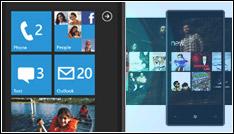Microsoft Confirms Yahoo As Phone 7 Data Culprit

The “phantom data” drain on some Windows Phone 7 handsets has been blamed on Yahoo Mail
Microsoft has identified as Yahoo Mail as the culprit behind the mysterious “phantom data” drain on some Windows Phone 7 handsets
For weeks, the company had been investigating complaints of smartphones devouring users’ data, even when not running applications or cruising the web. Some users reported that this unexplained consumption totalled between 30MB and 50MB within a 24-hour period.
On 20 January, Microsoft claimed it had located the cause behind the data drain: an application created by an unnamed third party, which the company apparently made aware of the issue. Almost immediately, rumours leaked across the blogosphere that Yahoo Mail was the application in question.
But it took a blogger to confirm that.
IMAP Issue
“Last week, I tore apart Windows Phone feedback packets to determine the feature’s role in the Windows Phone 7 data-usage saga,” Rafael Rivera, proprietor of the Within Windows blog, wrote in a 31 January posting. “I didn’t find anything of significant worry there, so I moved onto the next suspected culprit on the list: Yahoo.”
Rivera claims he discovered Yahoo’s IMAP (Internet Message Access Protocol) server (winmo.impa.mail.yahoo.com) not responding correctly to Windows Phone’s FETCH requests. Whereas a program’s “typical response” to a FETCH request might constitute four or five lines of code (as in Rivera’s example using AIM), the Yahoo Mail application apparently responded with at least 23 lines.
 “That may not look like much, but sandwich the extra bytes with encryption and multiply the size of each chunk by the number of emails in your box (or folder) … yeah. Scary,” Rivera wrote. “Yahoo is sending ~25 times as much data as it needs to. (This can also be read as: Your phone is downloading ~25 times as much data as it normally would, had you sided with another email provider.)”
“That may not look like much, but sandwich the extra bytes with encryption and multiply the size of each chunk by the number of emails in your box (or folder) … yeah. Scary,” Rivera wrote. “Yahoo is sending ~25 times as much data as it needs to. (This can also be read as: Your phone is downloading ~25 times as much data as it normally would, had you sided with another email provider.)”
Rivera has a track record of finding interesting tidbits in Microsoft code. Back in 2009, for example, he found code from the GPLv2-licensed ImageMaster project embedded in Microsoft’s free Windows 7 USB/DVD Download Tool, which the company subsequently yanked from its online Microsoft Store.
Official Confirmation
Following Rivera’s 31 January posting, and nearly three weeks after it first announced an investigation into the data-drain issue, Microsoft officially acknowledged an issue with Yahoo Mail – as well as a fix.
“We have determined that an inefficiency exists in the synchronisation of email between the Windows Phone Mail client and Yahoo! Mail,” reads a 31 January note from Microsoft to programmer Paul Thurrott, host of the Windows Phone Secrets blog. “This inefficiency can result in larger-than-expected data usage for a very small percentage of users.”
Windows Phone 7 owners can apparently solve the issue via these steps:
- On the Start screen of Windows Phone 7, click on the arrow at the top right.
- Choose “Settings” from the application list.
- Choose “Email & accounts.”
- Choose “Yahoo Mail.”
- Click on the setting under “Download new content.”
- Select a less frequent setting. If you are using the default setting (every 2 hours), change this setting to “manually.”
- Click on the setting under “Download email from.”
- Select a shorter time range. If you are using the default setting (the last 2 weeks), change this setting to “the last 7 days.”
Microsoft’s statement to Thurrott also highlighted a separate issue with Exchange ActiveSync email synchronisation, which will apparently be fixed “in a near-term end-user update from Microsoft.” In the meantime, users can apparently solve the issue by deleting any email that appears “stuck” in the outbox.
Microsoft plans on issuing a series of software updates that will tweak the smartphones for better performance and introduce a missing cut-and-paste feature. Currently available on GSM-based networks such as AT&T and T-Mobile, Windows Phone 7 is scheduled to appear on CDMA (Code Division Multiple Access) networks such as Sprint and Verizon before the second half of 2011.
Microsoft hopes the smartphones’ unique user interface, which consolidates web content and applications into a series of subject-specific Hubs, will allow it to regain market share against fierce competitors such as the Apple iPhone and the growing family of Google Android devices.